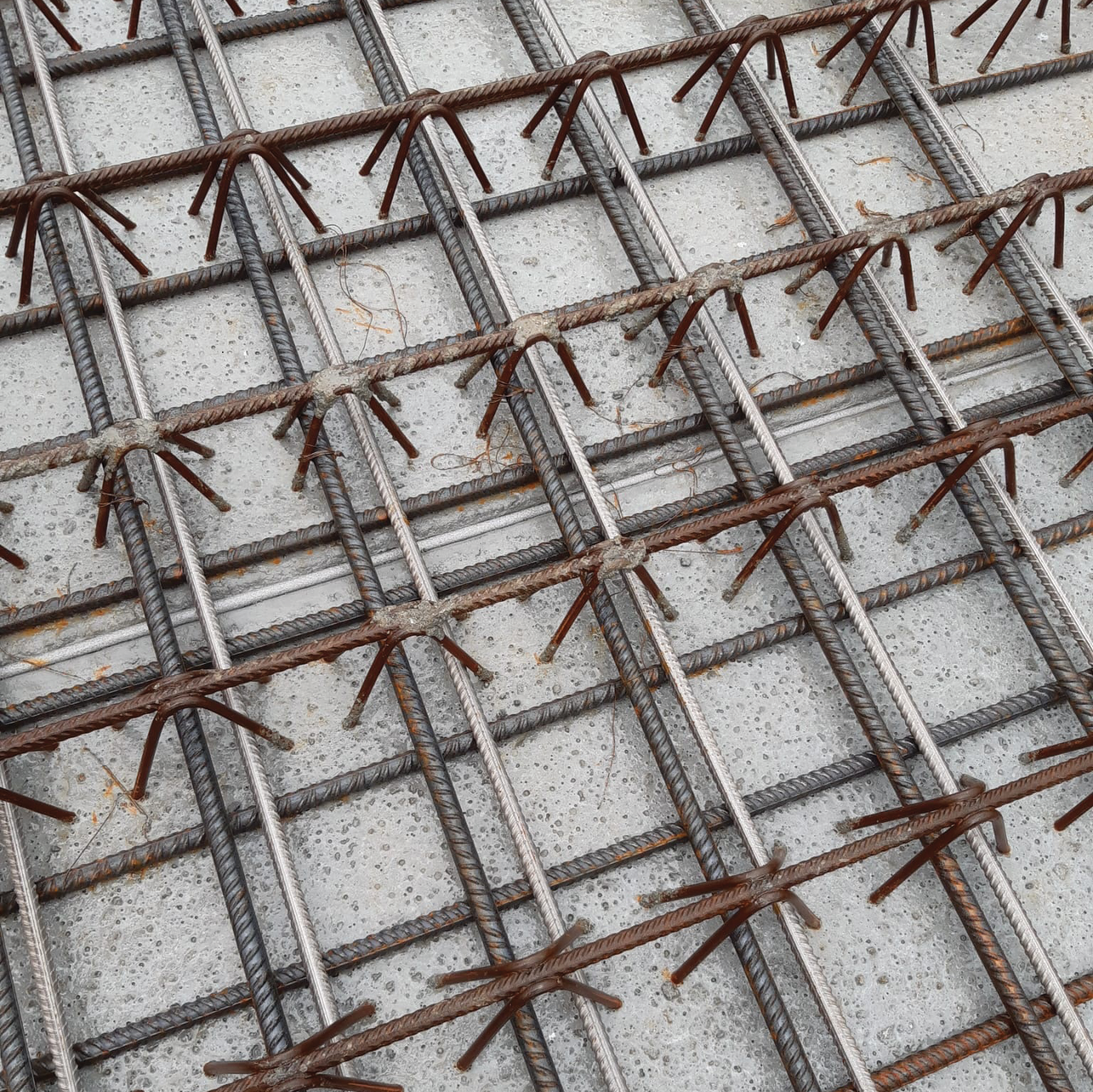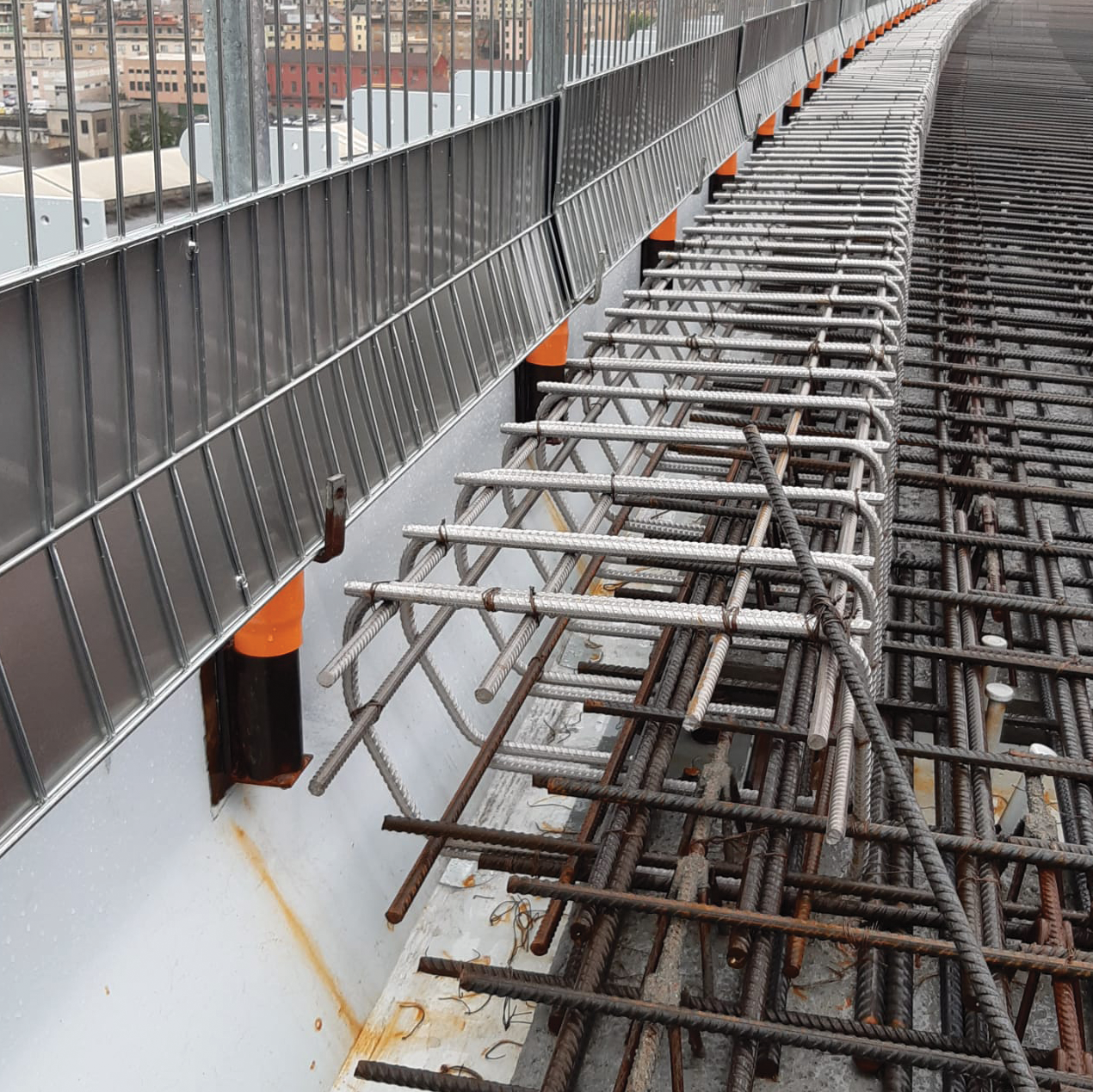After the collapse of Genoa’s Ponte Morandi in August 2018, an independent report indicated poor maintenance and flaws in the design and construction of the bridge as the likely causes behind the deadly accident. Corrosion of the cables on the top of the southern stay of one of the towers was cited as the main culprit. Also, regular inspections were said to be insufficient to allow for an adequate level of knowledge on the effective state of degradation of the cables.
The new San Giorgio bridge: stronger and more durable

Awareness about robustness and durability of bridge design has grown since Morandi’s time. The new San Giorgio Bridge (its successor) in Genoa was designed by Renzo Piano and inaugurated in 2020.
Awareness about robustness and durability of bridge design has grown since Morandi’s time. The new San Giorgio Bridge (its successor) in Genoa was designed by Renzo Piano and inaugurated in 2020. Unlike the original bridge’s cable-stayed design, it uses stainless steel reinforcement, which not only guarantees mechanical strength, but also corrosion resistance.
When dealing with the challenges of harsh marine environments, stainless steel provides significant savings overall in maintenance costs for bridges, proving to be the most economical solution in the long term.
Stainless steel was specified in the most critical areas at the design stage.
For example, stainless steel rebar was chosen for the pedestrian zone of the bridge and positioned next to steel rebar, which is located closer to the bridge deck core. When immersed in the concrete, the combined use of carbon steel and stainless steel, in contact with each other as the image shows, does not lead to an increased risk of corrosion of the carbon steel.


Reinforced where it’s needed
Stainless steel acts as a protection against corrosion and cracking or spalling of the structure elements most exposed to atmospheric agents; in fact, in very aggressive environmental conditions, such as marine and port structures, it is necessary to use materials with the right characteristics.
In the absence of stainless steel, external agents would trigger the corrosion of the carbon steel reinforcement, leading to an increase of its volume, causing the concrete to crack over time and the structure to deteriorate further.
Type 304L (UNS S30403)/1.4307 stainless steel reinforcement of different diameters was positioned at the outer surfaces of the concrete structure, in the sections of the structure which have a thinner concrete cover and are more exposed to the corrosion. Where exposure is not an issue (such as in the bulk of the concrete), carbon steel rebar ensures the structural integrity of the concrete.

Long-term value
The San Giorgio Bridge features 9000 t of carbon steel rebar and an additional 250 t of stainless steel rebar. This ratio of (only) 3% is typical of the 1 to 5% range that characterise reinforced concrete projects exposed to corrosive conditions. Observing such a ratio is also beneficial to the total cost of ownership of infrastructure projects.
When dealing with the challenges of harsh marine environments, stainless steel provides significant savings overall in maintenance costs for bridges, proving to be the most economical solution in the long term. Other important advantages in marine settings include superior mechanical strength, high ductility and excellent energy absorption capacity during seismic events.
This article was first published in our Nickel Magazine VOL 37-1, in April 2022.


